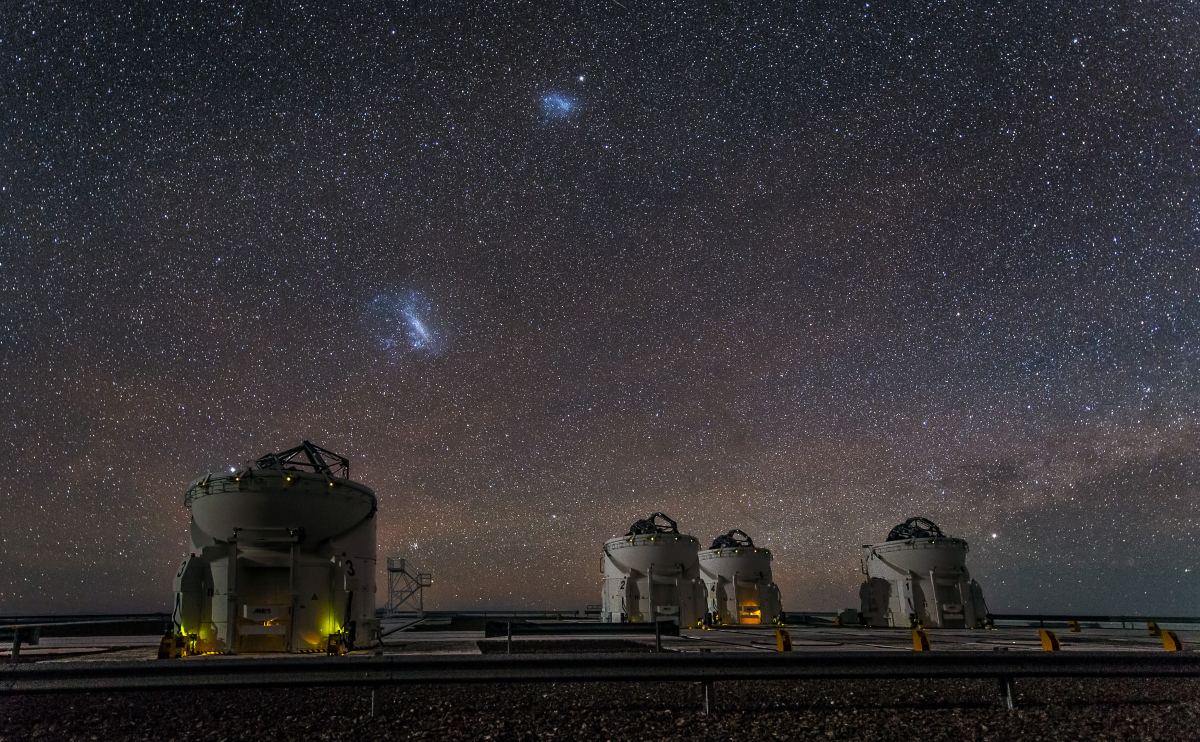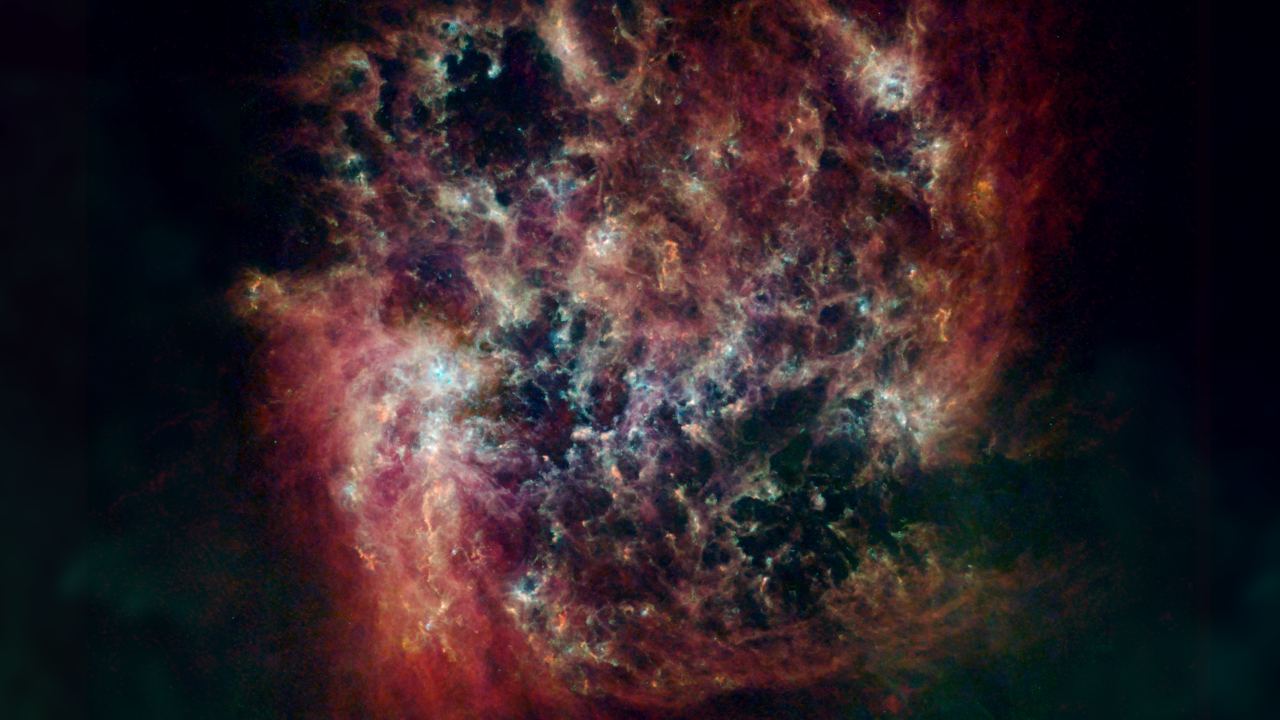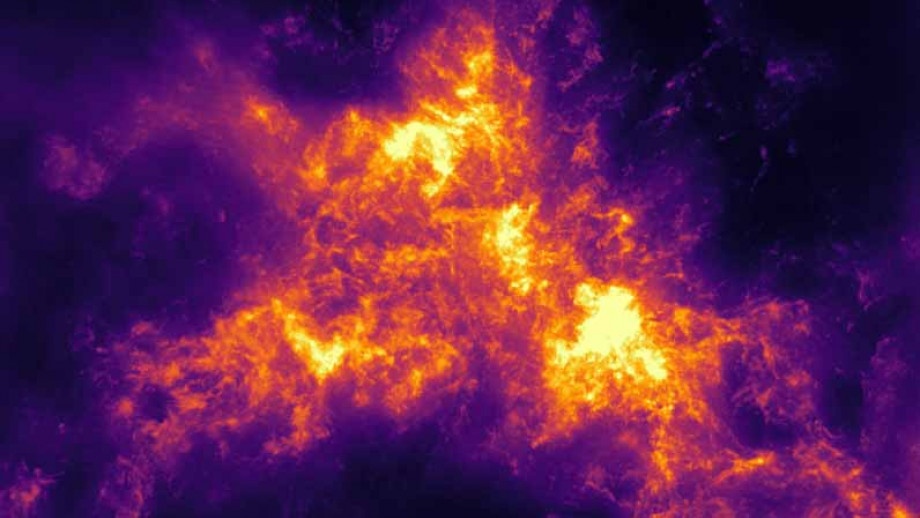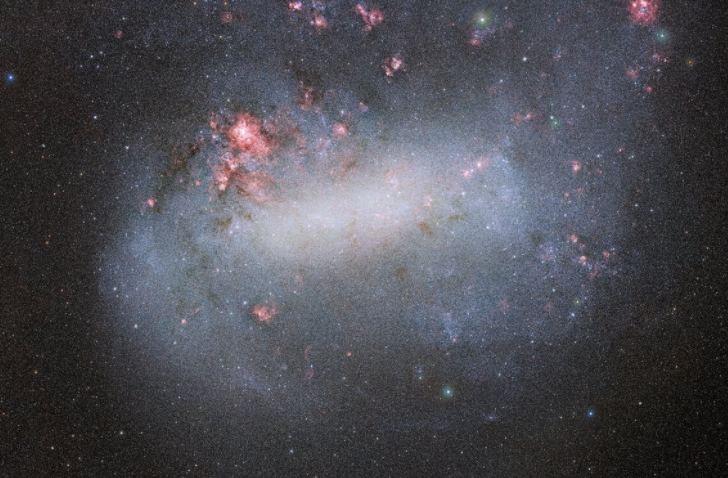Just outside the Milky Way Galaxy, roughly 210,000 light-years from Earth, there is the dwarf galaxy known as the Small Magellanic Cloud (SMC). Measuring about 18,900 light-years in diameter and containing roughly 3 billion stars, the SMC and its counterpart – the Large Magellanic Cloud (LMC) – orbit the Milky Way as satellite galaxies. Scientists are particularly interested in these satellites because of what they can teach us about star formation and the process where galaxies evolve through mergers, which is something the Milky Way will do with these two galaxies someday.
Another interesting feature of the SMC is the spectacular star cluster known as NGC 346, located near the center of the brightest star-forming region in the SMC, the hydrogen-rich nebula designated N66. Yesterday, NASA released a new image of this star cluster acquired by the venerable Hubble Space Telescope, which provides a unique and breathtaking view of this star cluster. These images were made possible thanks to Hubble’s sharp resolution and unique ability to make sensitive ultraviolet observations.
Continue reading “Massive Stars Shine in This Ultraviolet View From Hubble”





